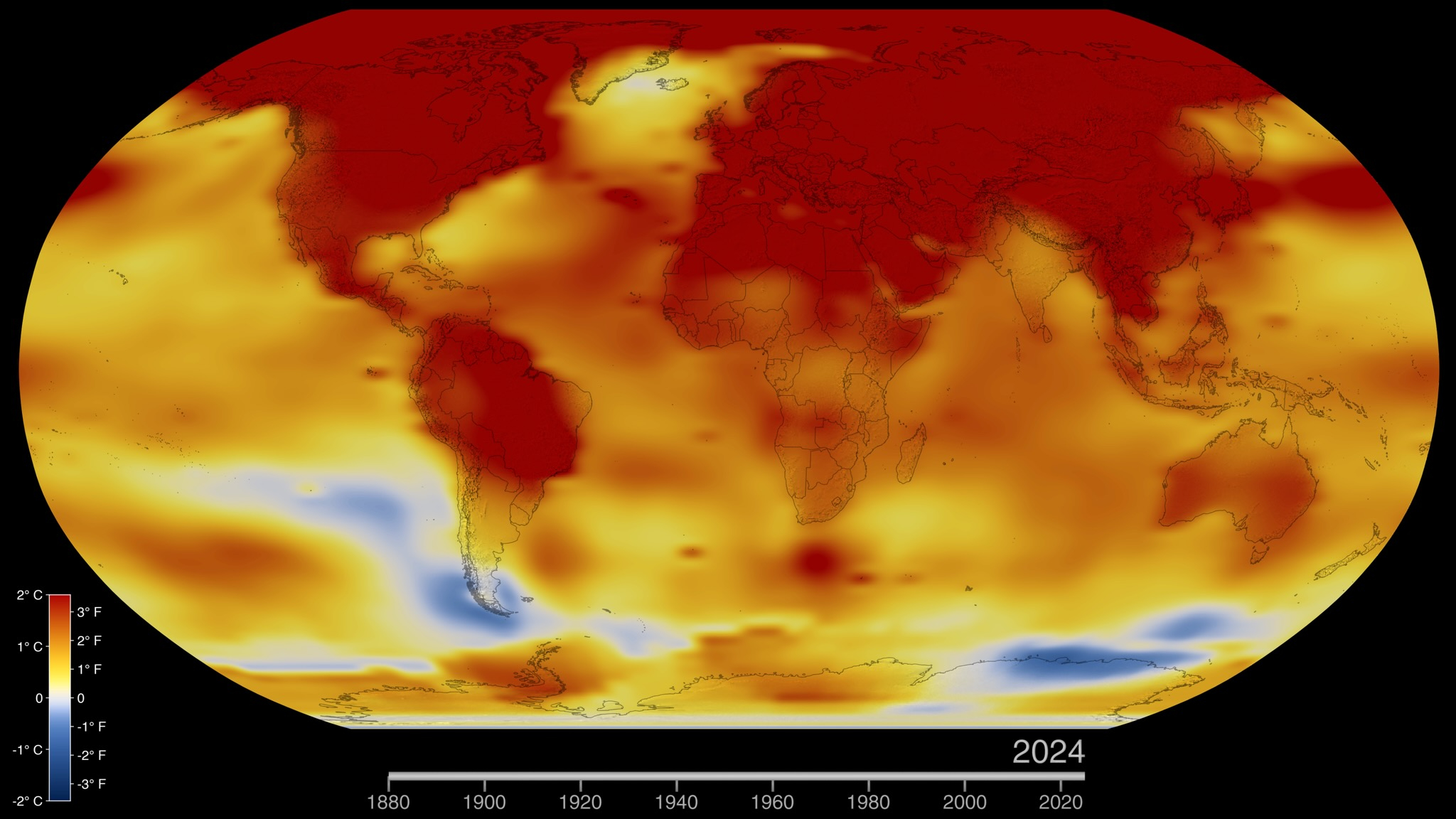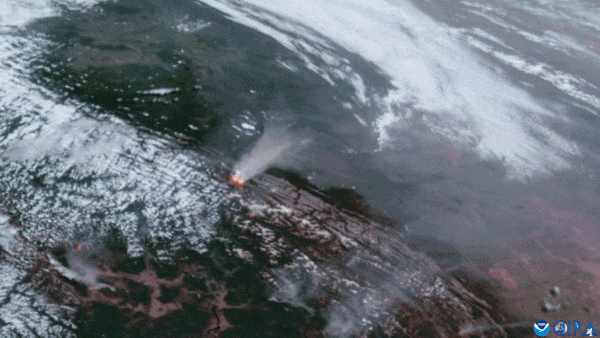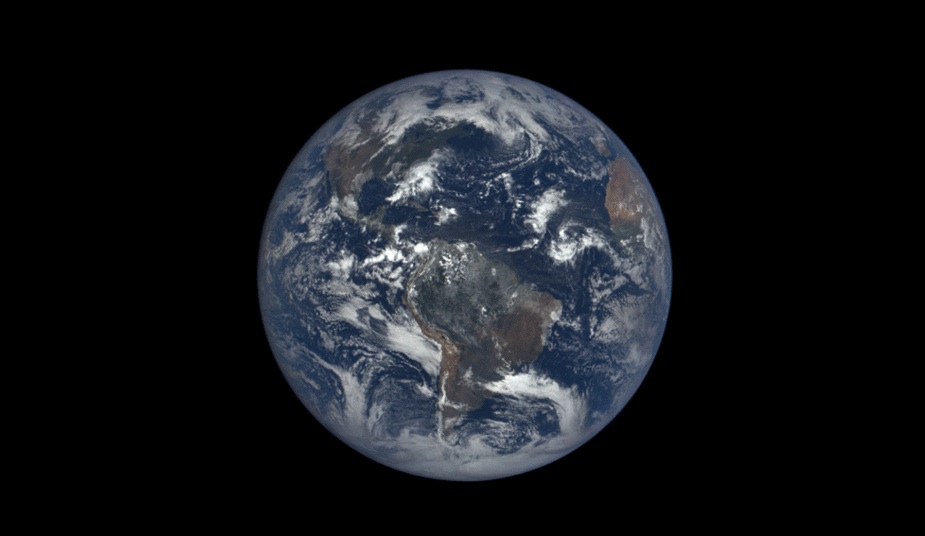A stark climate report, published on Wednesday, October 29, warns that the year 2024 is on track to become Earth’s hottest in at least 125,000 years. The grim assessment describes a world teetering “on the brink,” with its “vital signs flashing red” as nearly two-thirds of key climate indicators have already reached record-high levels.
The year 2024 has officially been declared the hottest on record, surpassing 2023, which previously held the unwelcome title as the warmest year in human history since record-keeping began in the late 1800s. This escalating heat culminates a decade of unprecedented warmth, a trend that commenced in 2015 and is unequivocally driven by human-caused climate change.
Adding a stark historical perspective, a new report led by researchers at Oregon State University suggests that 2024’s temperatures likely exceeded even the peak warmth of the last interglacial period, an era approximately 125,000 years ago. During that distant geological age, natural shifts in Earth’s orbit and axial tilt led to a warmer planet, resulting in sea levels that were several meters higher than today. This profound finding is based on a thorough analysis of previously published climate studies.
A recent study reveals a sobering reality: 22 of 34 measurable indicators of Earth’s health, encompassing critical metrics such as greenhouse gas levels, ocean heat, sea ice extent, and deforestation rates, have soared to unprecedented record extremes. The authors of the research issue a stark warning, asserting that these escalating trends signify humanity is now deeply entrenched in a “state of ecological overshoot,” consuming the planet’s vital resources at a rate that far outpaces its natural capacity for replenishment.

**Oregon State University ecology professor William Ripple, a co-leader of a new report, issued a stark warning to Space.com: the climate crisis has unequivocally transitioned into an emergency phase, making every fraction of a degree of avoided warming profoundly significant. He emphasized that successfully confronting this challenge will require “courage, cooperation, and speed.”**
In a new report published in the journal *BioScience*, critical planet-warming gases, including carbon dioxide and methane, once again reached unprecedented levels in 2025. The study highlighted that carbon dioxide concentrations at Hawaii’s Mauna Loa Observatory surged past 430 parts per million by May — a threshold not observed in millions of years.
Researchers indicate that the planet’s persistent warming trend is fueled by a complex interplay of several key factors.

Earth’s capacity to reflect sunlight is diminishing, a phenomenon driven by multiple factors. A primary driver is a notable decrease in atmospheric aerosols, particularly sulfates from industrial pollution, which previously reflected sunlight. Their reduced presence now permits greater heat absorption. This aerosol reduction also alters cloud dynamics, leading to thinner, less reflective clouds that exacerbate heat retention.
Compounding this, Earth’s albedo—its inherent reflectivity—is plummeting to near-record lows. This planetary “darkening” stems from melting ice and dwindling snow cover, which expose heat-absorbing darker surfaces. Alarmingly, recent research reveals the Northern Hemisphere is darkening at a pace significantly exceeding the South, creating an imbalance that scientists report is accelerating faster than current models predicted. This rapid shift could intensify warming across the northern regions and profoundly disrupt global weather patterns.
The global repercussions of these trends are unmistakable. Unprecedented ocean temperatures, confirmed by the National Oceanic and Atmospheric Administration, have triggered the most extensive coral-bleaching event documented in history. Simultaneously, Greenland and Antarctic ice sheets have plummeted to historic lows, with their melting rates accelerating fourfold since the 1990s. This rapid ice loss, a recent report indicates, signals that both polar regions may have surpassed critical tipping points, an irreversible shift that could commit the planet to several meters of future sea-level rise.
Global forests are exhibiting profound signs of stress, with recent satellite data revealing a significant escalation in tree-cover loss. A comprehensive study by Ripple’s team determined that in 2024, an alarming 29.6 million hectares of tree cover were lost worldwide. This figure represents the second-highest annual total on record, marking nearly a 5% increase compared to the losses observed in 2023.
A major contributor to this mounting destruction was an extraordinary 370% surge in fire-related losses throughout 2023. Researchers attribute this dramatic rise to increasingly hotter and drier conditions, exacerbated by the combined pressures of human-induced climate change and the El Niño weather phenomenon.

According to Ripple, concerning trends indicate that nature’s inherent safeguards against climate change are beginning to falter. These vital ecosystems—including forests, soils, and other natural environments crucial for capturing and storing carbon, regulating nutrient cycles, and buffering against environmental extremes—are reportedly losing their effectiveness.
By August 2025, Europe had witnessed its most extensive wildfire season on record, with over one million hectares ravaged by flames. Concurrently, Canada experienced its second-largest fire season. These widespread blazes discharge immense amounts of carbon into the atmosphere, a process that intensifies planetary warming. This warming, in turn, escalates the likelihood of even more fires, creating a dangerous, self-reinforcing cycle of escalating temperatures and increased risk, a recent study warns.
Identifying the precise thresholds where climate “tipping points” are irreversibly crossed remains a significant challenge, according to Ripple. However, he emphasized that it is becoming progressively evident that even current levels of global warming hold the potential to destabilize the Earth’s intricate systems.
Brazil’s Amazon, which encompasses roughly 60% of the world’s most extensive tropical forest, emerges as a significant highlight in the report. In 2024, the region experienced a substantial 30% reduction in deforestation, reaching its lowest point in nine years. This positive development is largely attributed to the robust environmental enforcement efforts implemented by President Luiz Inácio Lula da Silva’s administration, which has consistently placed a high priority on conservation, according to the report’s authors.
The latest findings resonate with a significant climate assessment released just weeks prior. That extensive report, compiled by an international body of 160 scientists representing 87 institutions across 23 nations, delivers a sobering warning. It highlights that the world’s warm-water coral reefs, crucial ecosystems supporting nearly a billion people and a quarter of all marine life, are actively crossing critical tipping points, evidenced by alarming mass die-offs already underway. Beyond the reefs, the assessment also flags impending tipping points for other vital climate regulators, including the Amazon rainforest, vast polar ice sheets, and essential ocean currents that play a critical role in moderating Earth’s climate.
The state of warm-water coral reefs has reached an “incredibly alarming” point, according to Mike Barrett, a chief scientific advisor and co-author of a recent report for the World Wildlife Fund in the U.K. In a statement, Barrett underscored the profound tragedy unfolding as these vital ecosystems surpass their thermal tipping point, posing a severe threat to marine biodiversity and the countless communities globally that depend on them for sustenance and income.
Just weeks before the critical United Nations climate summit in Brazil, two significant new reports have been unveiled. Scientists behind these studies are banking on their findings to compel global leaders towards more decisive and robust action in confronting the planet’s escalating and interconnected environmental crises.
Ahead of the impending COP30 climate negotiations, Barrett emphasized the critical need for all participating nations to fully comprehend the profound seriousness of the climate and nature crises. He warned of immense global losses should these environmental challenges remain unaddressed. Despite the gravity, Barrett asserted that viable solutions are readily accessible, calling for countries to demonstrate robust political will and collaborative leadership to implement them effectively.
Both influential reports collectively emphasize a clear message: viable solutions are within reach, and a critical window for decisive action remains open. Ripple notably identified the swift and widespread adoption of renewable energy technologies, especially solar and wind power, as “likely the single most powerful lever” available for impactful change.
When questioned about humanity’s capacity to avert the dire outcomes described in the report, he articulated a dual source of optimism: “nature’s resilience and human ingenuity.” He further elaborated on his conviction, asserting that “Earth systems can recover if given the chance.”







